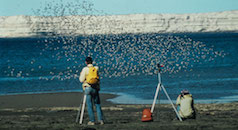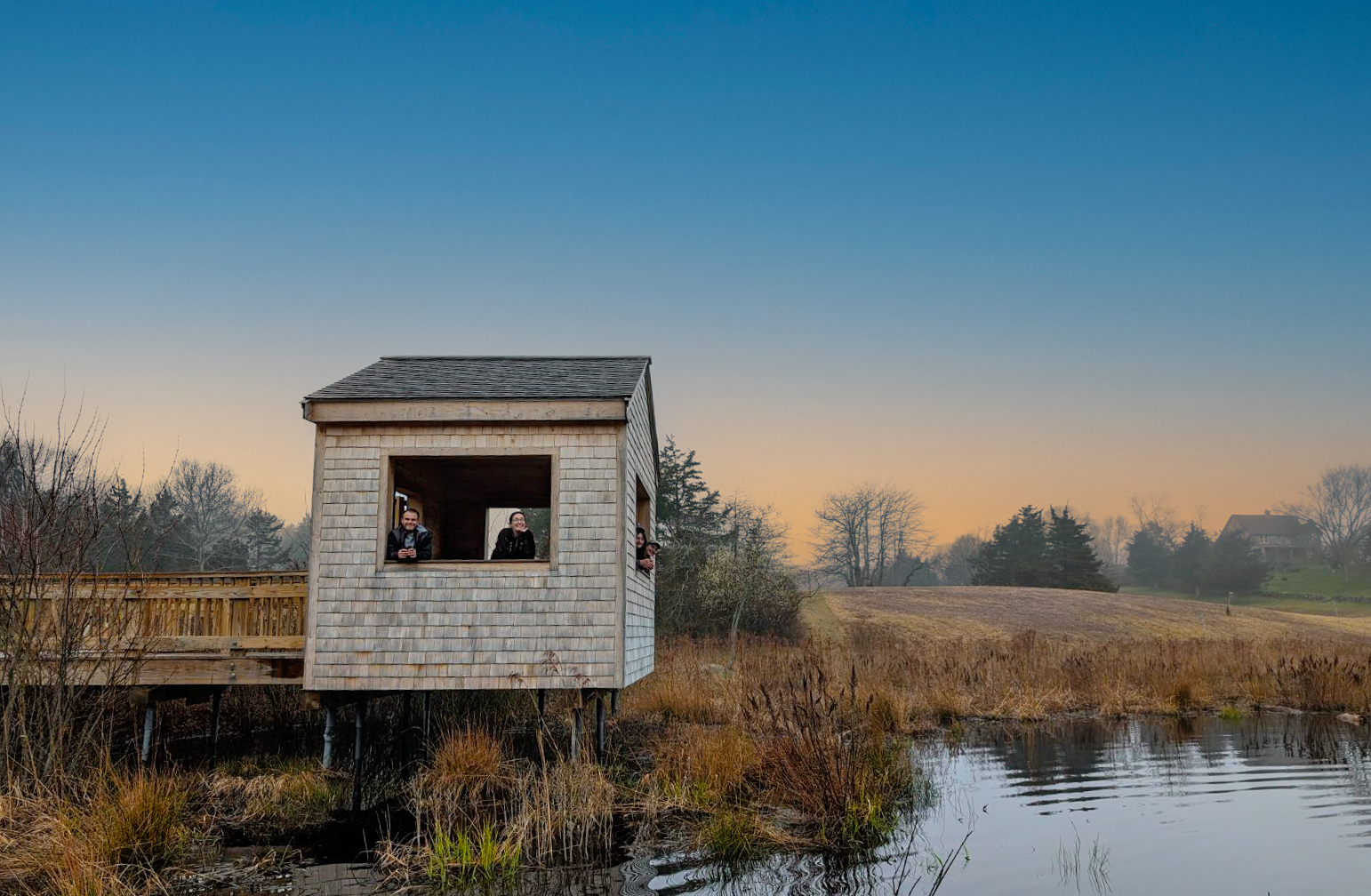This fall’s landbird banding season – the 48th year of data collection and education programs at Manomet – has started off with a bang.
“We’ve had northwest winds, high pressure and clear skies for the first few days,” said Banding Director Trevor Lloyd-Evans. “This perfect migration weather has led us to catch a larger number and variety of birds than we typically catch so early on in the fall.”
Manomet’s 50 mist nets opened on August 15 and have been run on the same dates and in the same locations since the program began. This large, standardized dataset provides valuable comparisons of range expansions and contractions, yearly variation of migration and long-term population change.
Over the first few days of the season, the banders caught more than 210 birds. The birds included many locally breeding birds such as Gray Catbirds, Carolina Wrens and Downy Woodpeckers, as well as several long-distance migrants.
“An Eastern Wood-Pewee, two Yellow-bellied Flycatchers, two Blue-winged Warblers, a Prairie Warbler, two Hooded Warblers and a Worm-eating Warbler are among the long-distance migrant species caught so far this fall,” Lloyd-Evans said. “The Hooded Warbler and Worm-eating Warbler are particularly unusual birds for Massachusetts.”
Only 12 Hooded Warblers and three Worm-eating Warblers have been caught at the Manomet laboratory during the fall since 2003. The northern extent of the Hooded Warbler’s breeding range is southern New England, and the individuals caught at the Manomet laboratory likely dispersed from their breeding grounds and flew north and east to southeastern Massachusetts before beginning their southward migration.
This season’s banding staff consists of Patrick Roberts, Grace Alloy-Relihan, Samuel Roberts and Danielle Aube.
Patrick Roberts was a bander at Manomet last fall. He spent the winter studying Prairie Warblers in the Bahamas and the early summer studying Black-throated Blue Warblers at Hubbard Brook Experimental Forest in New Hampshire.
Alloy-Relihan, who was a Manomet bander last Spring, has also rejoined the banding team. Prior to becoming a Manomet bander she was an intern at the Raptor Trust in Millington, New Jersey, where she helped care for orphaned, sick and injured birds.
Samuel Roberts and Aube join the Manomet banding team for the first time this season. They both come to Manomet after working at Point Blue Conservation Science in California, where Roberts supervised banding interns and point counting around Marin County and Aube performed nest searching as an intern.
“We have assembled a great team of banders for our fall season,” Lloyd-Evans said. “As always, we are eager to see what this season brings and to educate our many visitors.”
To view summaries of past banding seasons and read about trends observed over Manomet’s 48 years of landbird banding, click here.
– Haley Jordan





 Back to all
Back to all